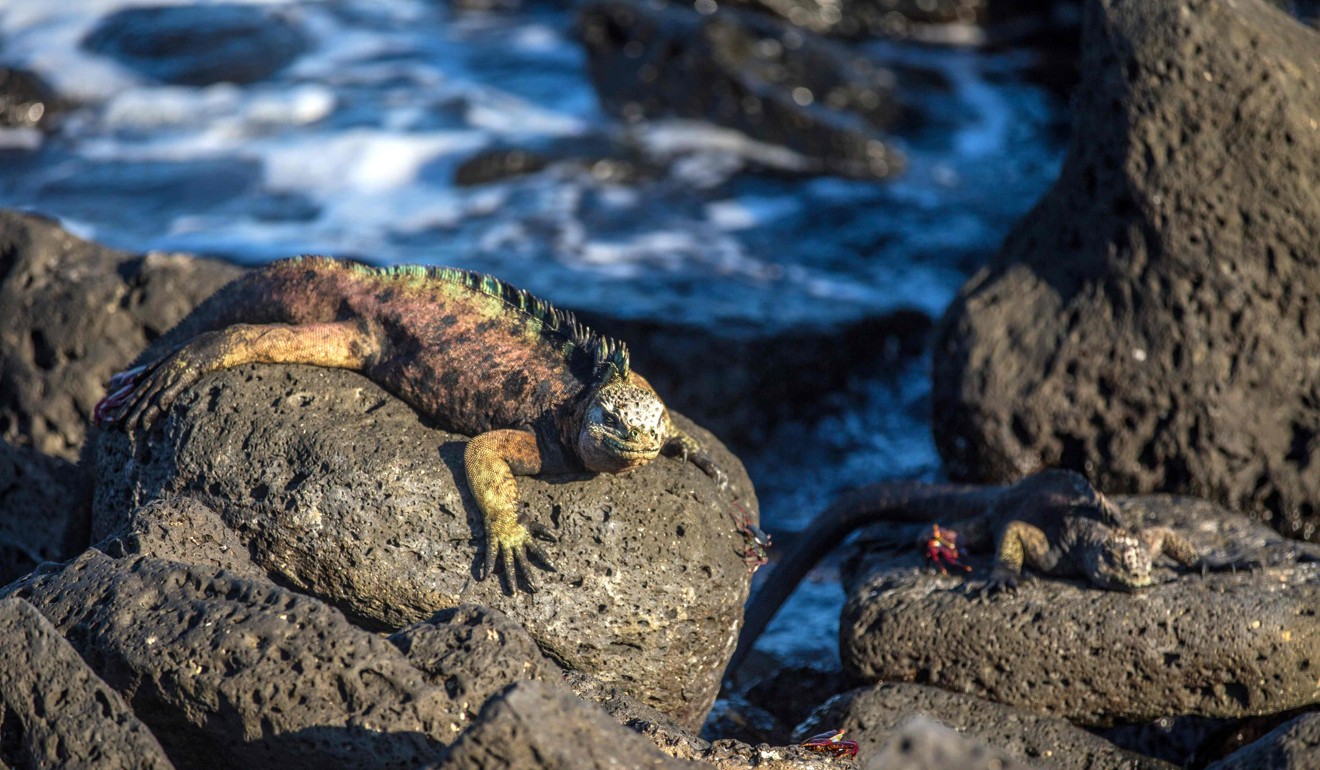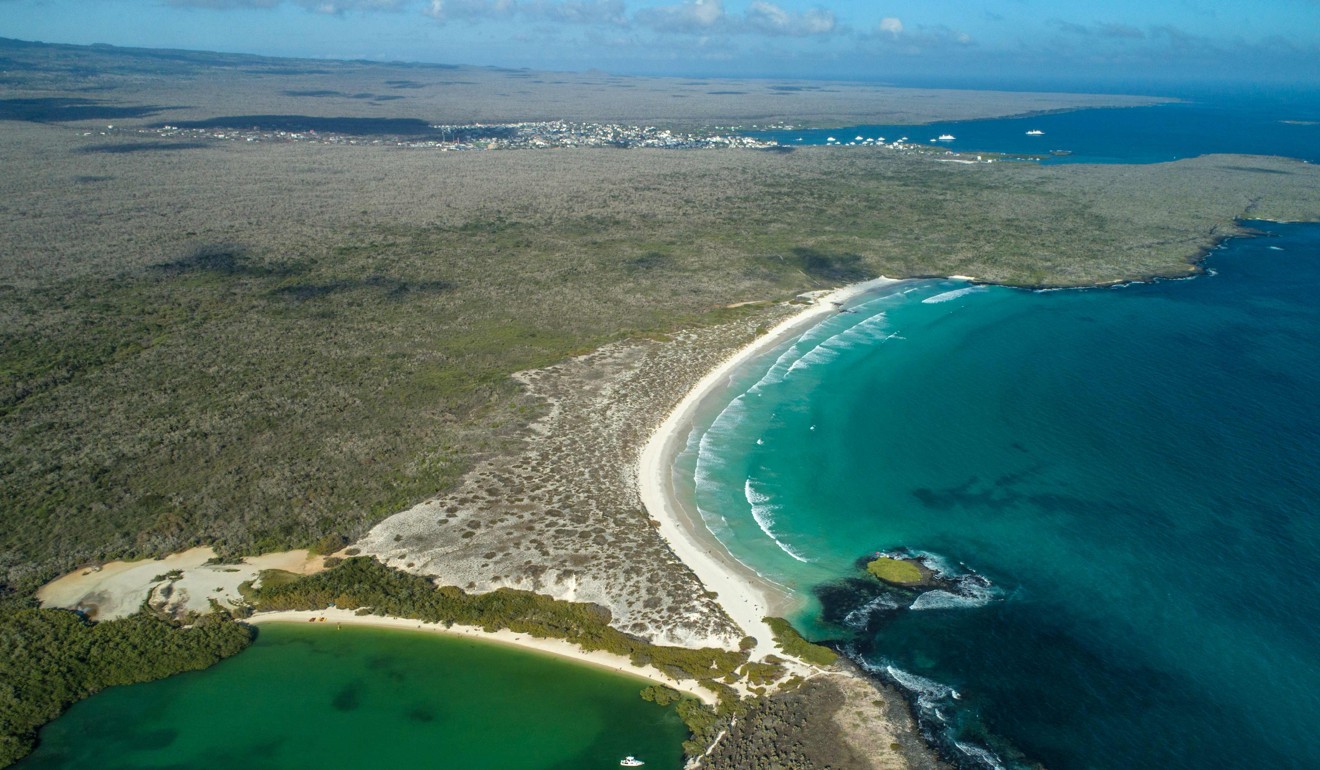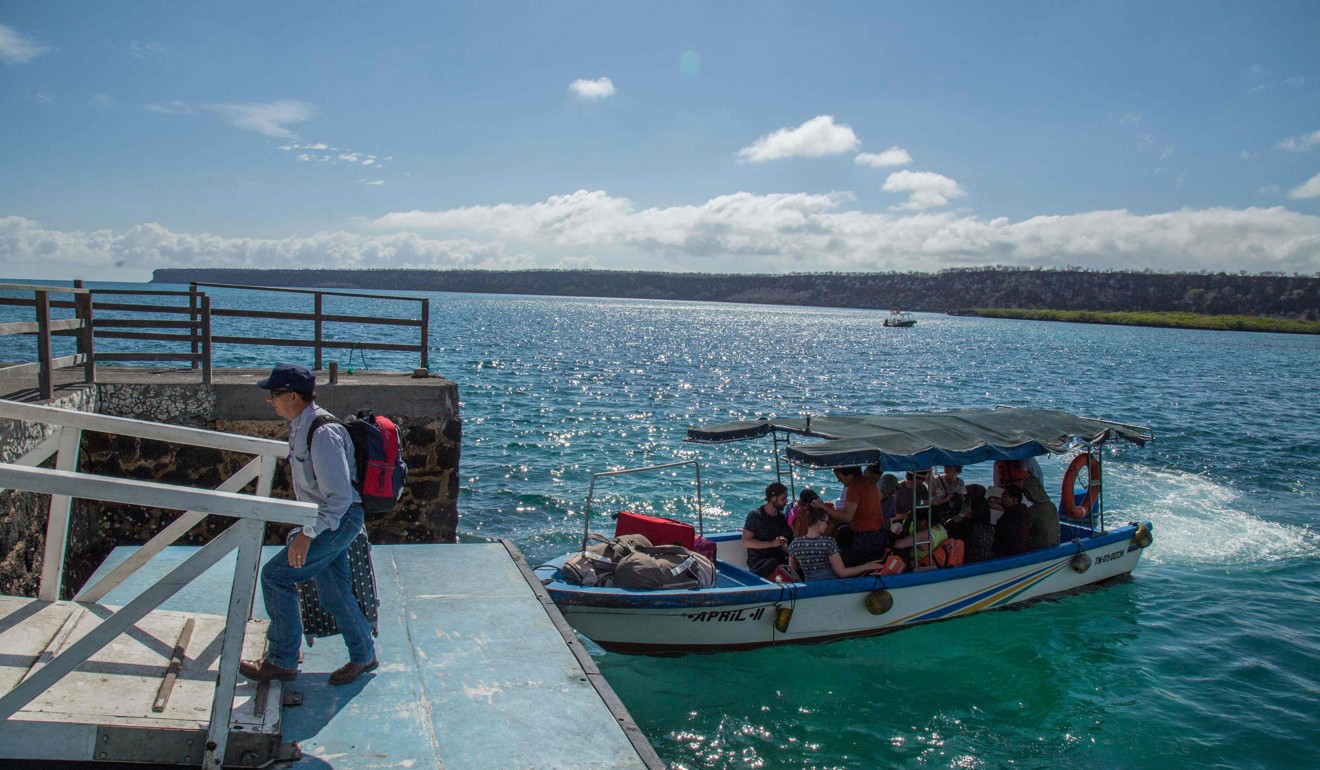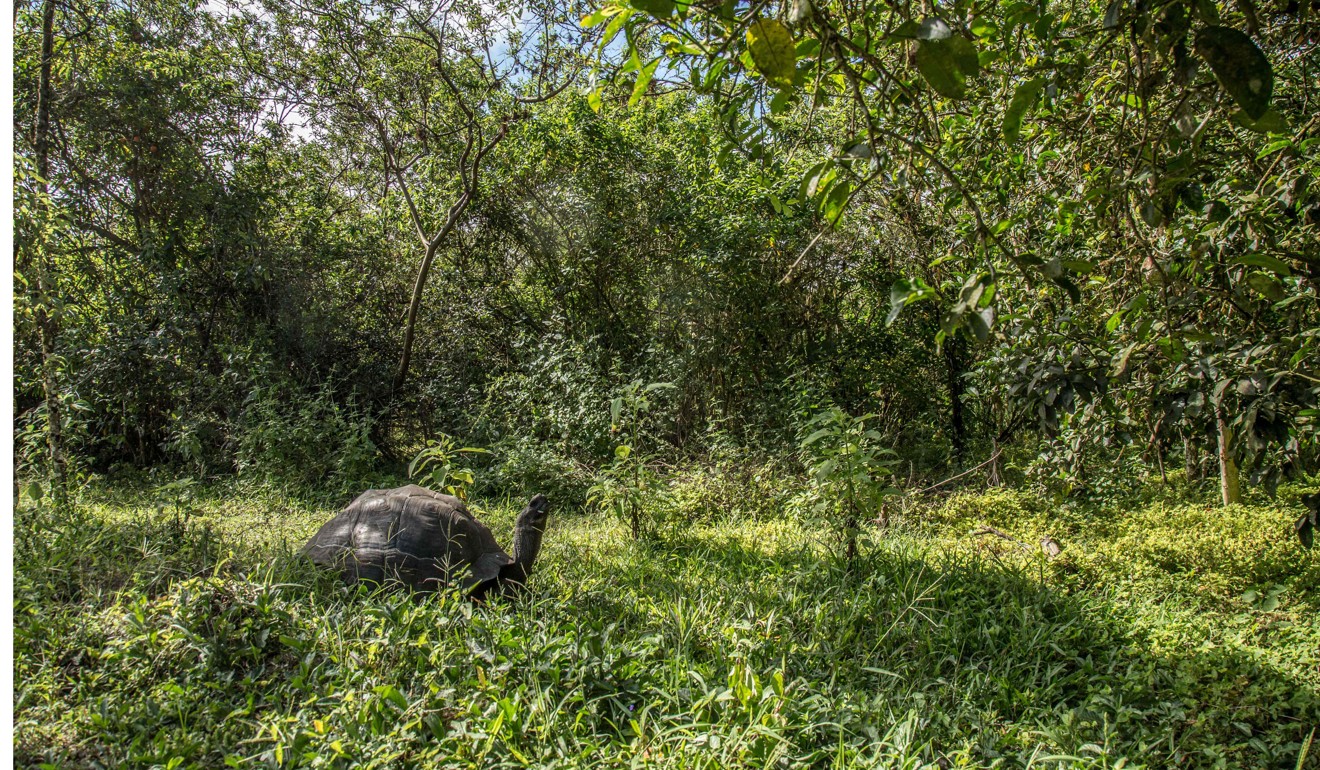
Why Galapagos Islands turn away tourists: to safeguard ecosystems that are ‘the crown jewel’
Ecuadorean authorities limit visitor numbers in the pristine archipelago to preserve its unique fauna and flora. But it’s a tough ask for a country whose economy is reliant on hard-currency earnings and looking to increase tourism
With its giant tortoises, crested black iguanas and huge ocean manta rays, the Galapagos Islands are one of the most beautiful places you will probably never visit.
Why not? Who wouldn’t want to go to a white sand beach and soak up some sun alongside a lounging iguana or surf in waters with a rainbow of tropical fish below?
But to protect the flora, fauna and ecosystems of this Pacific archipelago that inspired Charles Darwin’s theory of evolution, Ecuador is in the odd position of having to turn away millions of would-be tourists each year.

Keeping a tight lid on tourism is the way the South American country has preserved this volcanic string of 19 large islands, dozens of islets and rocky outcroppings.
Authorities wage this fight as global tourism grows and grows – it was up seven per cent last year according to the World Tourism Organisation – and they must resist the temptation to let in hordes of visitors, their pockets bulging with dollars.
“The Galapagos are the crown jewel, and as such, we have to protect them,” says tourism minister Enrique Ponce de Leon. “We must be drastic in caring for the environment.”
With a network of small hotels and ferries running between the islands, the Galapagos – about 1,000 kilometres (600 miles) off the coast – is an eco-tourism destination that is among the most select spots in the Pacific.

Flights from Quito or Guayaquil can cost around US$400 round-trip, and a one-week stay ranges from US$2,000-7,000 per person.
The flow of tourists has risen to 245,000 per year and authorities say that is pretty much the limit: the maximum the islands can withstand without harming their various ecosystems.
Adventure travel for retirees: Hong Kong agencies tailor trips for silver-haired globetrotters as their numbers rise
“The environmental, social and biological features of this place – which is like no other – forces us to set a limit, to manage tourism in terms of supply, rather than demand,” says Walter Bustos, director of the Galapagos National Park.

Preyed on in the past by pirates and whaling ships, the Galapagos these days face illegal fishing, the effects of climate change and the arrival of intrusive species such as dogs, cats and rats brought over from the mainland.
The challenge is to manage tourism in a sustainable way, one that preserves the ecosystems and generates profits.
The national park was created in 1959 to protect 97 per cent of the islands’ land surface, and in 1978 Unesco classified the archipelago as a World Heritage Site. A marine reserve spanning 138,000 square kilometres (53,280 square miles) was also established.
A 38,000-square-kilometre (15,000 square mile) marine sanctuary in which all fishing is banned was set up between two of the islands, one called Darwin and the other Wolf. Those waters are believed to be home to the highest concentration of sharks on earth.
The islands depend on imports from the mainland and have limited sources of water, so authorities make sure the human population does not grow. These days, only 26,000 people live on the four islands that are inhabited.
By law, Ecuadoreans from the mainland are treated as foreigners on the Galapagos. To obtain permanent residency, such people have to have been married to a local for at least a decade.

For years, the authorities have been limiting construction, and promoting the use of renewable energy sources and electric cars. Plastic bags are banned.
On the island of Baltra, which is the main port of entry, the airport runs exclusively on solar and wind power. “The challenge is to manage tourism in a sustainable way, one that preserves the ecosystems and generates profits. We must not view tourists as the devil,” says Juan Carlos Garcia, conservation director of the WWF in Ecuador.
THE ‘INDO-PACIFIC’ IS REALLY NOTHING NEW, JUST ASK THE FISH
But of course, limiting tourism here is of no help to the broader Ecuadorean economy, which operates with dollars as the official currency.
And these have been lean years for hard currency in oil-producing Ecuador because of low global crude prices and accumulation of debt. Tourism and mining have emerged as lifesavers.
Last year, visitors to this fabulously diverse country boasting volcanoes and thick Amazon jungle shot up 14 per cent compared to 2016, totalling 1.6 million. But that is small compared to other countries in Latin America.

President Lenin Moreno’s idea is for tourism to prop up the economy, even more than oil. For that reason, he decreed an open-skies policy a few months ago to free up air traffic and bring more tourists to Quito and Guayaquil. And many of these travellers will want to go to the Galapagos.
The state-owned airline TAM has announced more flights to the islands. But will the island authorities be able to withstand this pressure?
“We need to stress quality, and have those who come now stay longer – have them tour the rest of the country, offering them package deals,” says the tourism minister.

.png?itok=arIb17P0)